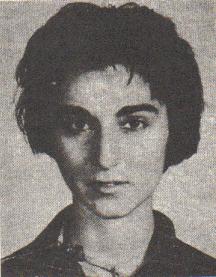Ethics Presentation for “News Reporting II”
(This is not a blog post per se but an outline for a talk I’m giving to a class. It’s not a PowerPoint-like slide show, although a short video is included. It’s both for my use and for students if they wish to check links etc.)

I. The slaying for apparently 50 years has been a topic for sermons, and teen and undergrad discussions — “What has this country come to?” and the like.
A. It’s general ethics, not journalism ethics.
B. Until 10 years ago when it moved over to media ethics. “Kitty, 40 Years Later,” by Jim Rasenberger, The New York Times, Feb. 8, 2004
C. And this month: “A Call for Help: What the Kitty Genovese Story Really Means,” by Nicholas Lemann, The New Yorker, March 10, 2013. Lemann is former dean of Columbia University Graduate School of Journalism.
II. The story we all were told by NYT, March 27 and 28, 1964

Kew Gardens, Queens. 38 unnamed witnesses to fatal stabbing and rape, says police commish to metro editor, none tried to stop attack or call police. Suspect of this and other similar attacks: Winston Moseley. This victim, bar manager Catherine “Kitty” Genovese. It took him three separate attacks to kill her.
III. The uncovered story
Two attacks in 35-minute span. Witness Robert Mozer’s yells ended first attack, which is in the open; two others called police. Ambulance arrives at site of second attack, interior hall, neighbor Sophia Farrar holds a dying Genovese.
Witness Joseph Fink took a nap after first attack. Witness Karl Ross saw both attacks, called two friends to ask for advice, 2nd pal said come over then he called police.
IV. Principals – Journo
A.M. Rosenthal, 41, wrote his account Thirty-Eight Witnesses later in ’64, new edition in ’99. Main proponent of the Silent Witness angle.
NYC Police Commissioner Michael Murphy. Their lunch, March 23
Reporter Martin Gansberg. Died in 1995.
V. Principals – Real
Catherine “Kitty” Genovese, 28, bar manager, in a year-long gay relationship. Partner still alive.
Winston Moseley, 29, punch-card operator, African-American, married 2 kids. Also burglar. Confessed to this and another confirmed murder. Trial was over sanity. Eyewitnesses not called. Now 79, in prison. Escape in 1968, attacked one or two women before capture.
VI. Two books this winter
Kitty Genovese: The Murder, the Bystanders, the Crime That Changed America, by Kevin Cook. Backs revisionist account. Says the silent, unnamed witnesses did not know what it was they heard. (Quarrel in or outside nearby bar.)
Kitty Genovese: A True Account of a Public Murder and Its Private Consequences, by Catherine Pelonero. Promotional site: kittygenovesebook.com. Backs original account, though finds only 33 witnesses. Pelonero is said to argue that the ensuing outcry did so much good that using unnamed sources, if they all existed, is justified
The Christian Science Monitor also contrasts both new books. It has a link to a 3:28 local TV account about both books.
VII. The greater good
Development of the concept By-stander Effect. Defined briefly by Psychology Today and in a 2007 article in American Psychologist, noted by Lemann.
“Psychologists Bibb Latane and John Darley arrived at a counterintuitive conclusion: the greater the number of bystanders who view an emergency, the smaller the chance that any will intervene. People tend to feel a ‘diffusion of responsibility,'” says the Rasenberger 2004 article.
911 emergency number — The program began in 1968. The idea had been bandied about for years. Wikipedia doesn’t mention Genovese case.
VII. Conclusions
This wasn’t good journalism, even in 1964. Ends do not justify the means. Can’t even say the exception proves the rule.
If now: Would you call 9-1-1 on your cell, and would it be before or after you shot some footage?
